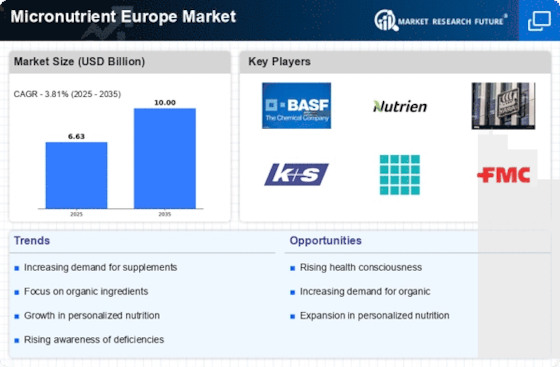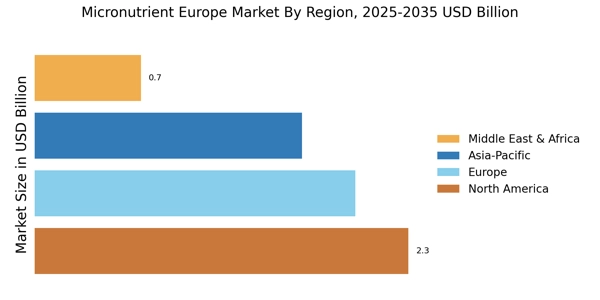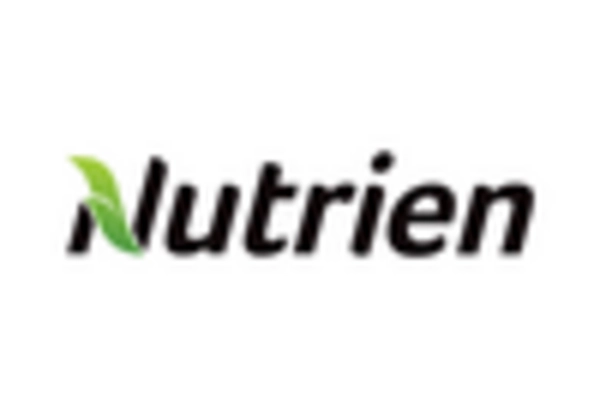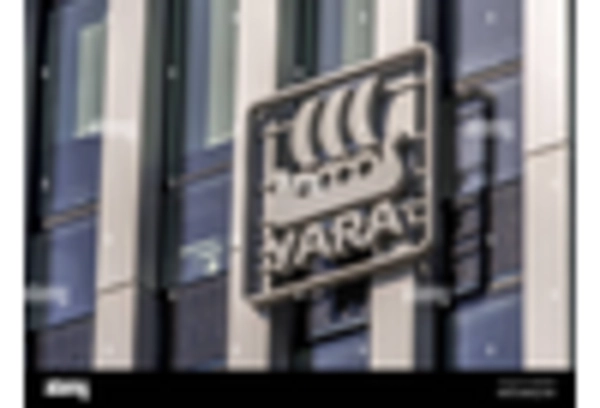Increasing Nutritional Awareness
The Micronutrient Europe Market is experiencing a notable surge in consumer awareness regarding nutrition and its impact on health. This heightened awareness is driven by various factors, including educational campaigns and the proliferation of information through digital platforms. As consumers become more informed about the benefits of micronutrients, there is a growing demand for products that can enhance dietary intake. Reports indicate that the market for dietary supplements, which includes micronutrients, is projected to reach approximately EUR 30 billion by 2025. This trend suggests that consumers are increasingly seeking ways to incorporate essential vitamins and minerals into their diets, thereby propelling the growth of the Micronutrient Europe Market.
Rising Demand for Functional Foods
The Micronutrient Europe Market is witnessing a significant shift towards functional foods, which are products enhanced with additional nutrients, including vitamins and minerals. This trend is largely driven by consumers seeking foods that offer health benefits beyond basic nutrition. According to market analysis, the functional food sector is expected to grow at a compound annual growth rate of over 8% in the coming years. This growth is indicative of a broader consumer preference for products that support health and wellness, thereby creating opportunities for the Micronutrient Europe Market to expand its offerings. Manufacturers are increasingly formulating products that align with this demand, integrating micronutrients into everyday food items.
Aging Population and Nutritional Needs
The demographic shift towards an aging population in Europe is significantly influencing the Micronutrient Europe Market. As individuals age, their nutritional requirements change, often necessitating higher intakes of specific micronutrients to maintain health and prevent chronic diseases. This demographic trend is expected to result in increased demand for supplements tailored to older adults, particularly those rich in vitamins D, B12, and calcium. Market projections indicate that the senior supplement segment could account for a substantial portion of the overall micronutrient market, potentially reaching EUR 10 billion by 2025. This growing segment underscores the importance of addressing the unique nutritional needs of the aging population within the Micronutrient Europe Market.
Regulatory Support for Nutritional Products
The regulatory landscape surrounding the Micronutrient Europe Market is evolving, with governments implementing supportive policies aimed at promoting health and nutrition. Initiatives such as the European Food Safety Authority's guidelines on micronutrient intake are fostering a favorable environment for the development and marketing of micronutrient products. These regulations not only ensure product safety but also encourage innovation in formulation and delivery methods. As a result, manufacturers are more inclined to invest in research and development, leading to a wider array of products that cater to diverse consumer needs. This regulatory support is likely to enhance the overall growth trajectory of the Micronutrient Europe Market.
Technological Advancements in Nutrient Delivery
Technological innovations are playing a pivotal role in the Micronutrient Europe Market, particularly in the area of nutrient delivery systems. Advances in encapsulation technology and nano-delivery systems are enhancing the bioavailability of micronutrients, making them more effective for consumers. These innovations not only improve the efficacy of supplements but also allow for the development of new product formats, such as functional beverages and fortified snacks. As consumers continue to seek convenient and effective ways to meet their nutritional needs, the integration of technology into product development is likely to drive growth in the Micronutrient Europe Market. This trend suggests a promising future for companies that invest in research and development.


















Leave a Comment